Peripheral Nervous System: Receptors, Sensory Pathways, and Pain Mechanisms
1/46
There's no tags or description
Looks like no tags are added yet.
Name | Mastery | Learn | Test | Matching | Spaced |
|---|
No study sessions yet.
47 Terms
What does the Peripheral Nervous System (PNS) carry to the CNS?
Information from the outside environment.
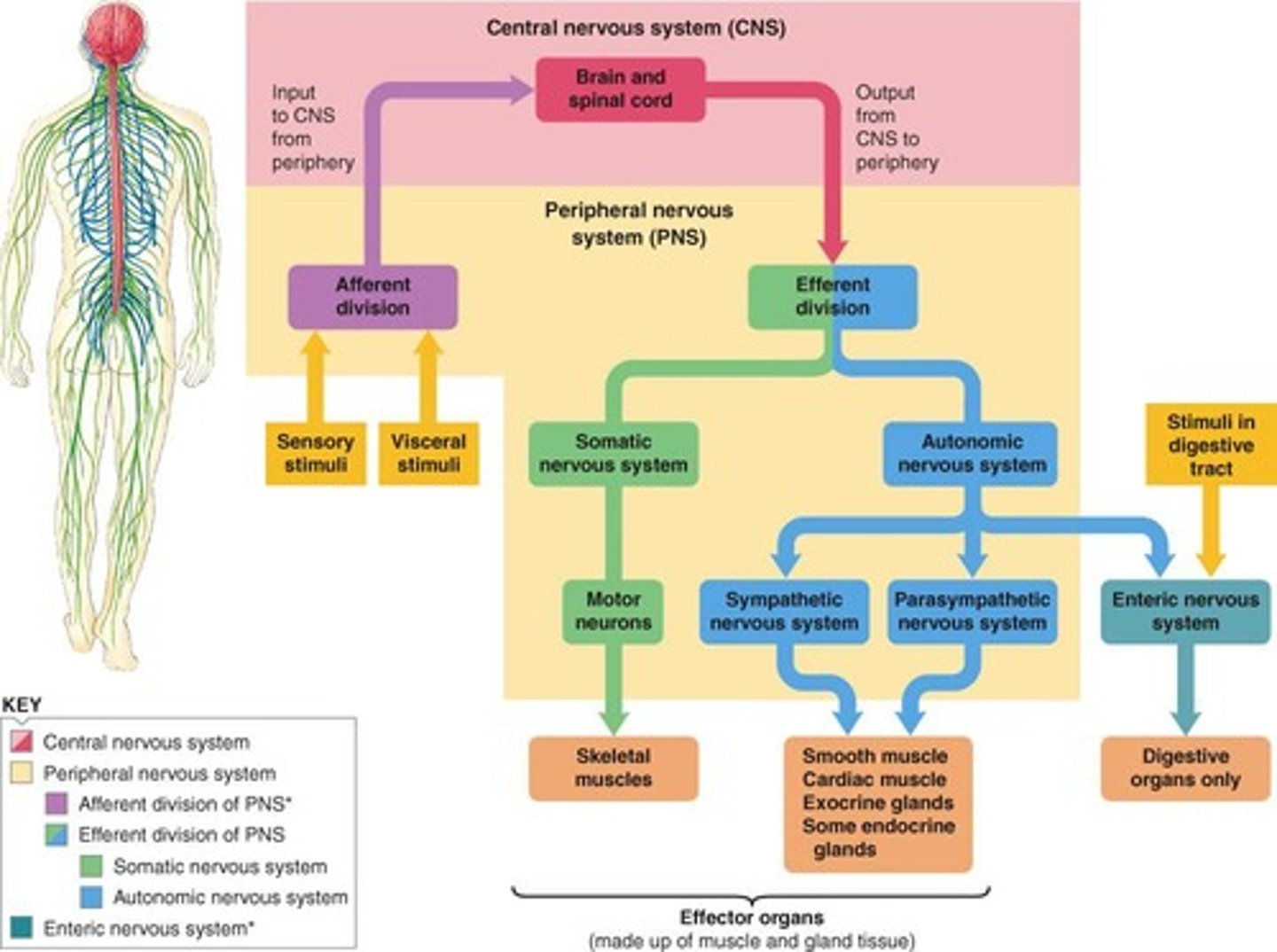
What is receptor physiology?
It describes how receptors are activated, how stimuli are carried, and how action potentials are generated.

What are the two types of receptors in the PNS?
Exteroceptors (external stimuli) and interoceptors (internal stimuli).
What is the significance of sensory acuity in the PNS?
It relates to the ability to detect different types of stimuli and the organization of sensory information.
What is the process of converting a stimulus into an electrical response called?
Sensory transduction.
What are nociceptors?
Pain receptors that respond to tissue damage.
What is an adequate stimulus?
The specific type of stimulus that a receptor is specialized to respond to.
What are the five types of stimuli that receptors can detect?
Light, heat, sound, pressure, and chemical changes.
What is the difference between tonic and phasic receptors?
Tonic receptors adapt slowly or not at all, while phasic receptors rapidly adapt to a maintained stimulus.
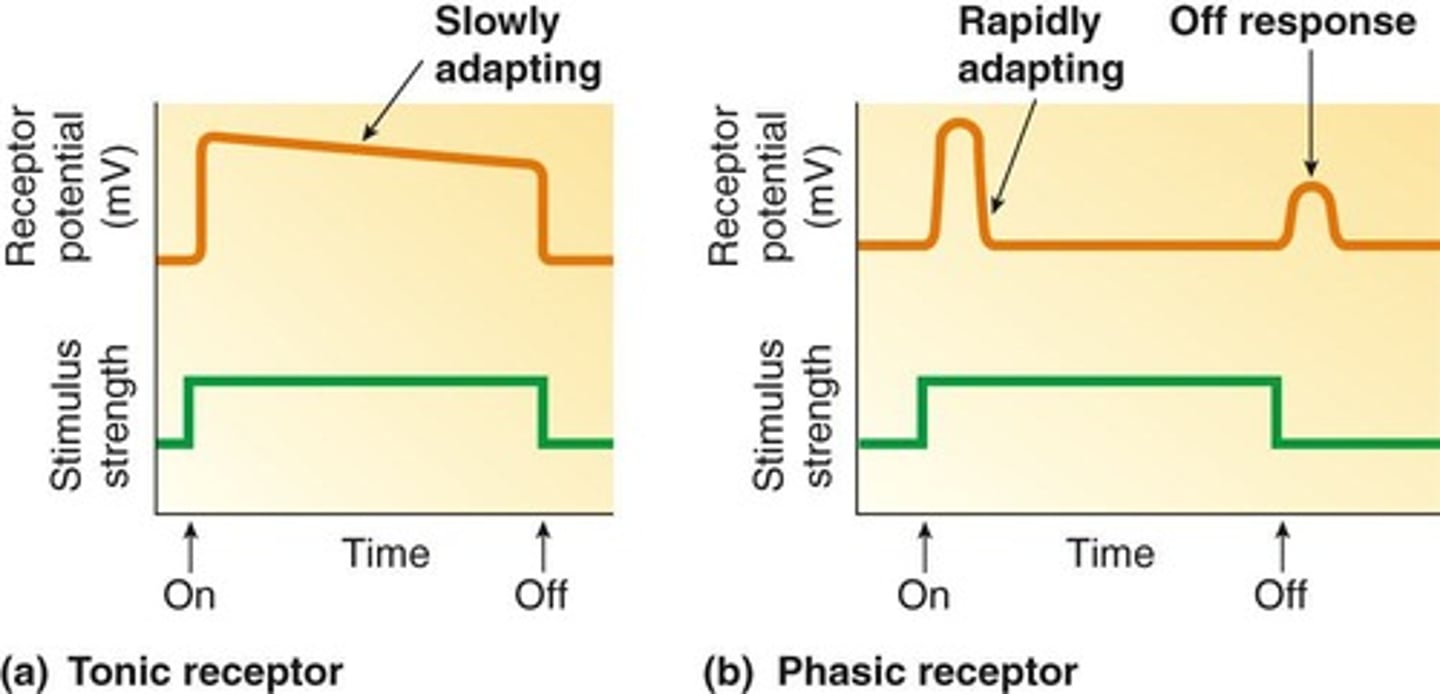
What are the four types of tactile receptors?
Merkel's Disc, Pacinian Corpuscle, Ruffini Endings, and Meissner's Corpuscle.
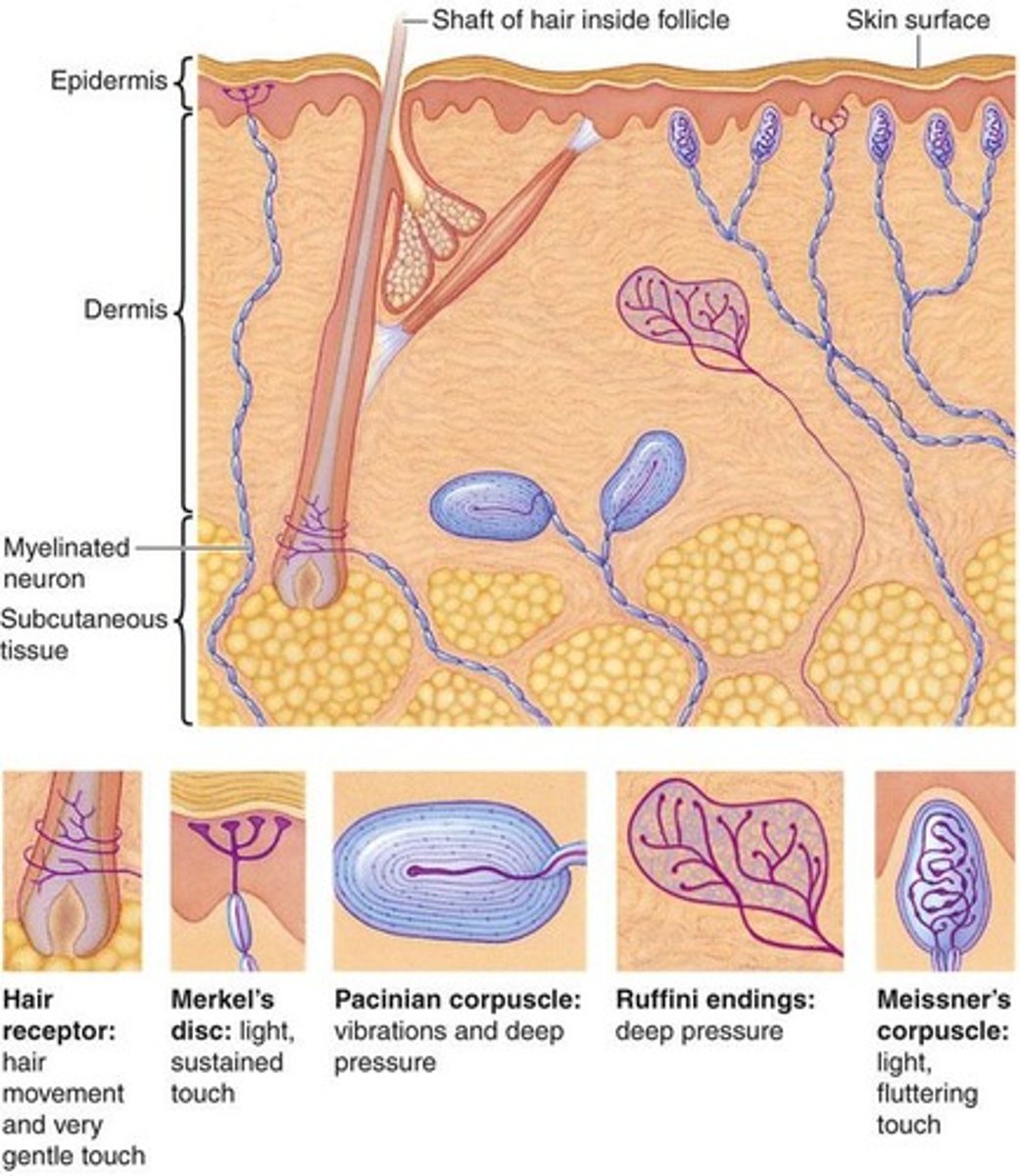
How do small and large sensory stimulations differ in terms of action potential generation?
Small stimulation results in low frequency AP firing and decreased NT release, while large stimulation results in high frequency AP firing and increased NT release.
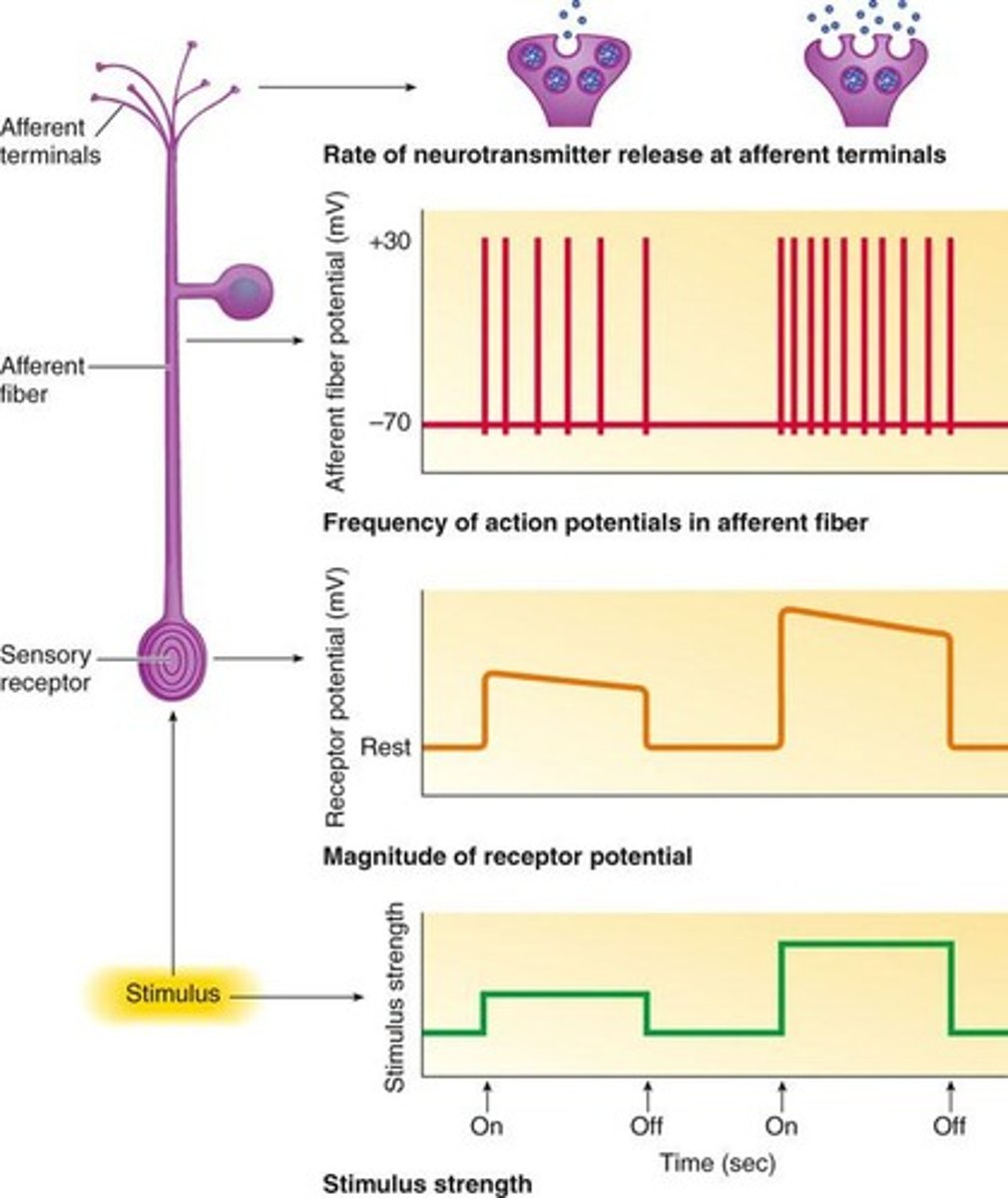
What happens during receptor adaptation?
Receptors may stop responding to a stimulus after prolonged exposure, leading to desensitization.
What is the role of neurotransmitters in the PNS?
They are released in response to action potentials and influence the next cell to inform the CNS about stimulus strength.
What is the function of mechanoreceptors?
They are sensitive to mechanical stimulation.
What type of receptor is sensitive to temperature changes?
Thermoreceptors.
What is the role of receptor potentials?
They are graded potentials in sensory receptor cells that can initiate action potentials.
What is the significance of the receptor field?
It determines the area from which a receptor can detect stimuli.
What is the difference between habituation and adaptation?
Habituation is a CNS process where the response to a stimulus decreases over time, while adaptation refers to receptors no longer responding to a maintained stimulus.
How do receptors communicate with afferent neurons?
Through synapses that cause receptor potentials and the release of neurotransmitters.
What is the function of osmoreceptors?
They are sensitive to osmolarity changes.
What is the role of action potentials in the PNS?
They are generated at the receptor end and convey sensory information to the CNS.
What is the function of chemoreceptors?
They detect chemicals, pH, O2, and CO2 levels.
What is adaptation in the context of sensory receptors?
Adaptation is a receptor adjustment (sensitivity) in the peripheral nervous system (PNS).
What is habituation?
Habituation is a modification of synaptic effectiveness that occurs in the central nervous system (CNS).
What are the two types of sensory pathways?
1. Somatic (body) sensation 2. Special senses
What types of sensations fall under somatic sensation?
1. Somesthetic sensation from the skin 2. Proprioception from muscles or joints 3. Visceral sensations
What are the special senses?
1. Vision 2. Hearing 3. Equilibrium 4. Taste 5. Smell
What is a receptive field in sensory neurons?
A receptive field is the specific region where each somatosensory neuron responds to stimulus information.
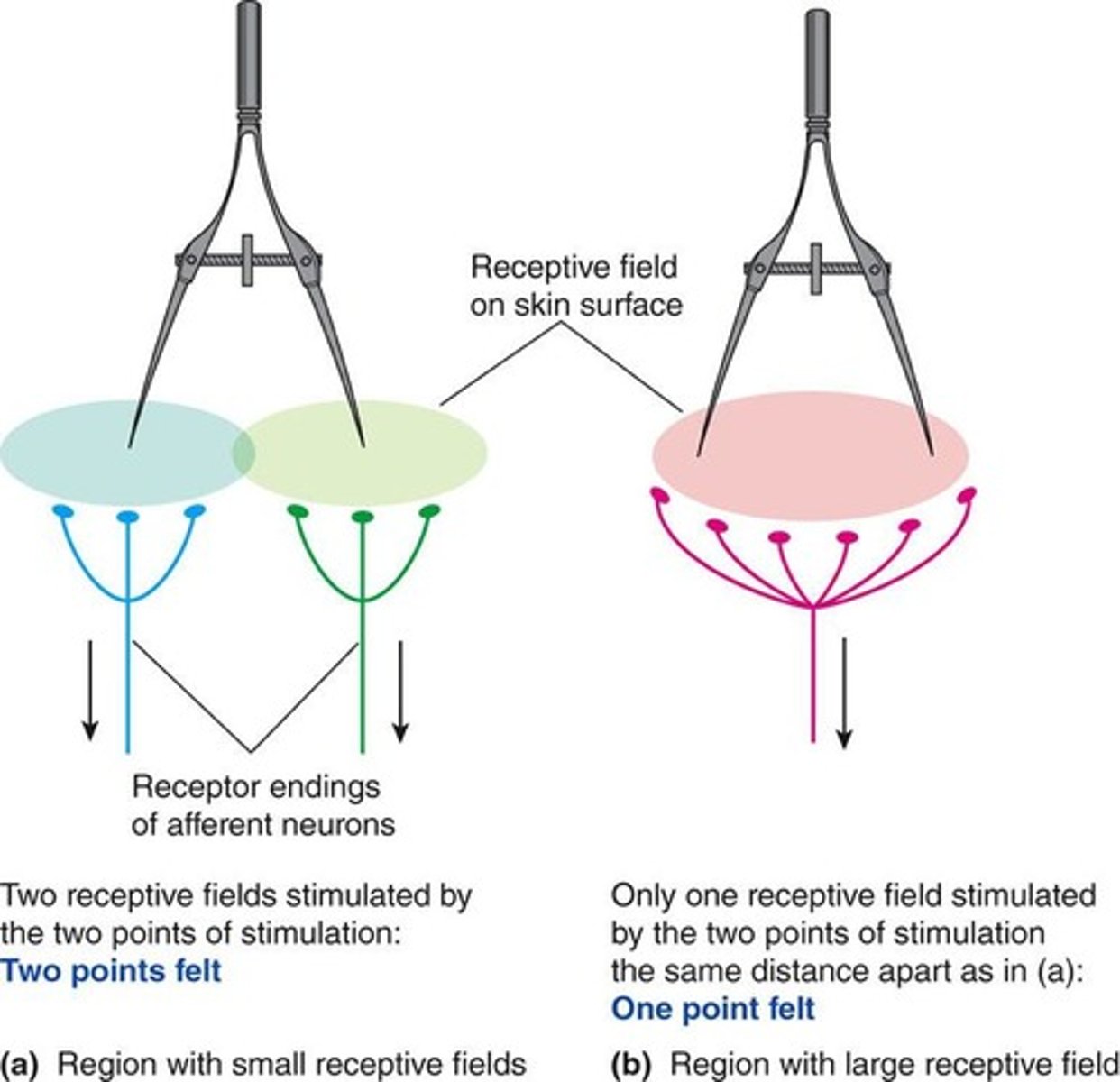
How does the size of the receptive field relate to receptor density?
The size of the receptive field varies inversely with the density of the receptors; closer receptors result in smaller receptive fields.
What is sensory acuity?
Sensory acuity is the extent to which one can detect stimuli of minimal size, intensity, or duration.
What factors influence sensory acuity?
1. Receptive field size 2. Lateral inhibition
What is lateral inhibition?
Lateral inhibition is when each activated pathway inhibits adjacent pathways by stimulating inhibitory interneurons.
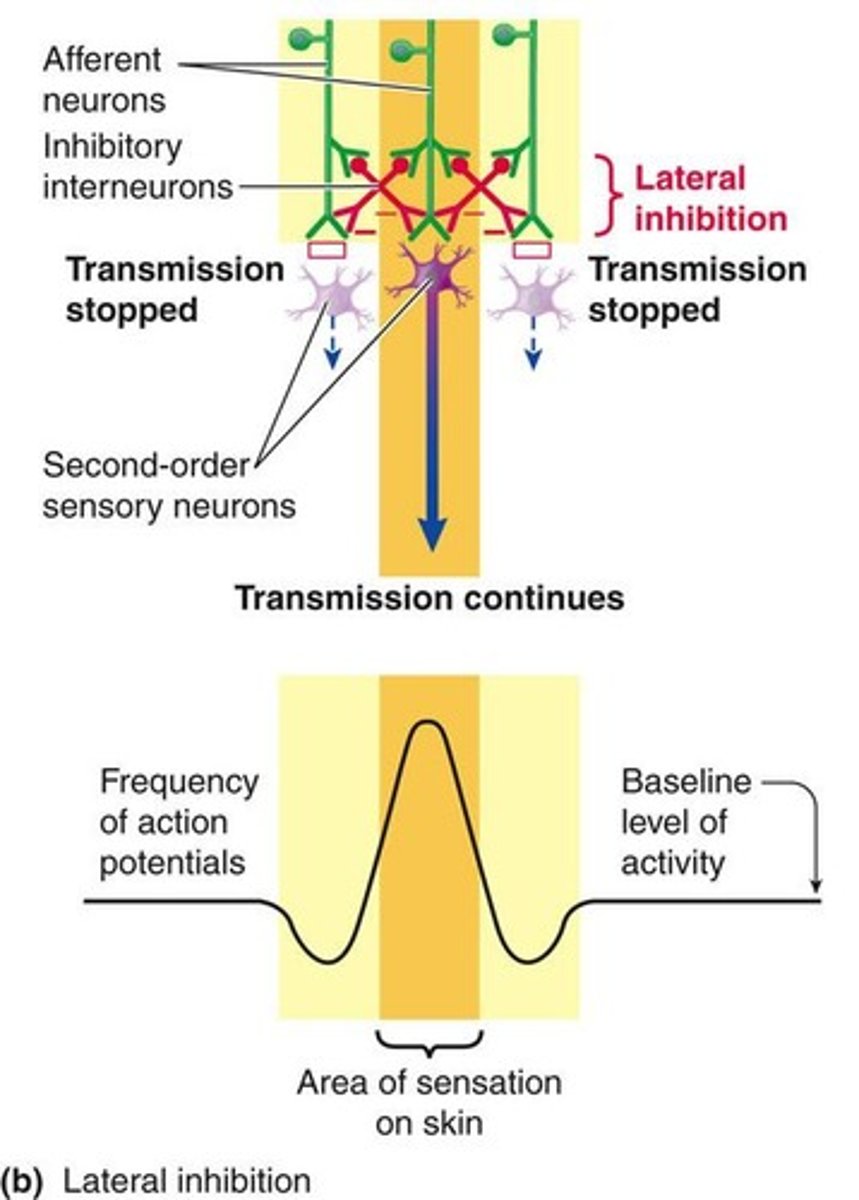
What is the role of the strongest stimulus in lateral inhibition?
The strongest stimulus inhibits less excited pathways more than weakly activated areas in the fringe.
What are the three categories of nociceptors?
1. Mechanical nociceptors 2. Thermal nociceptors 3. Polymodal nociceptors
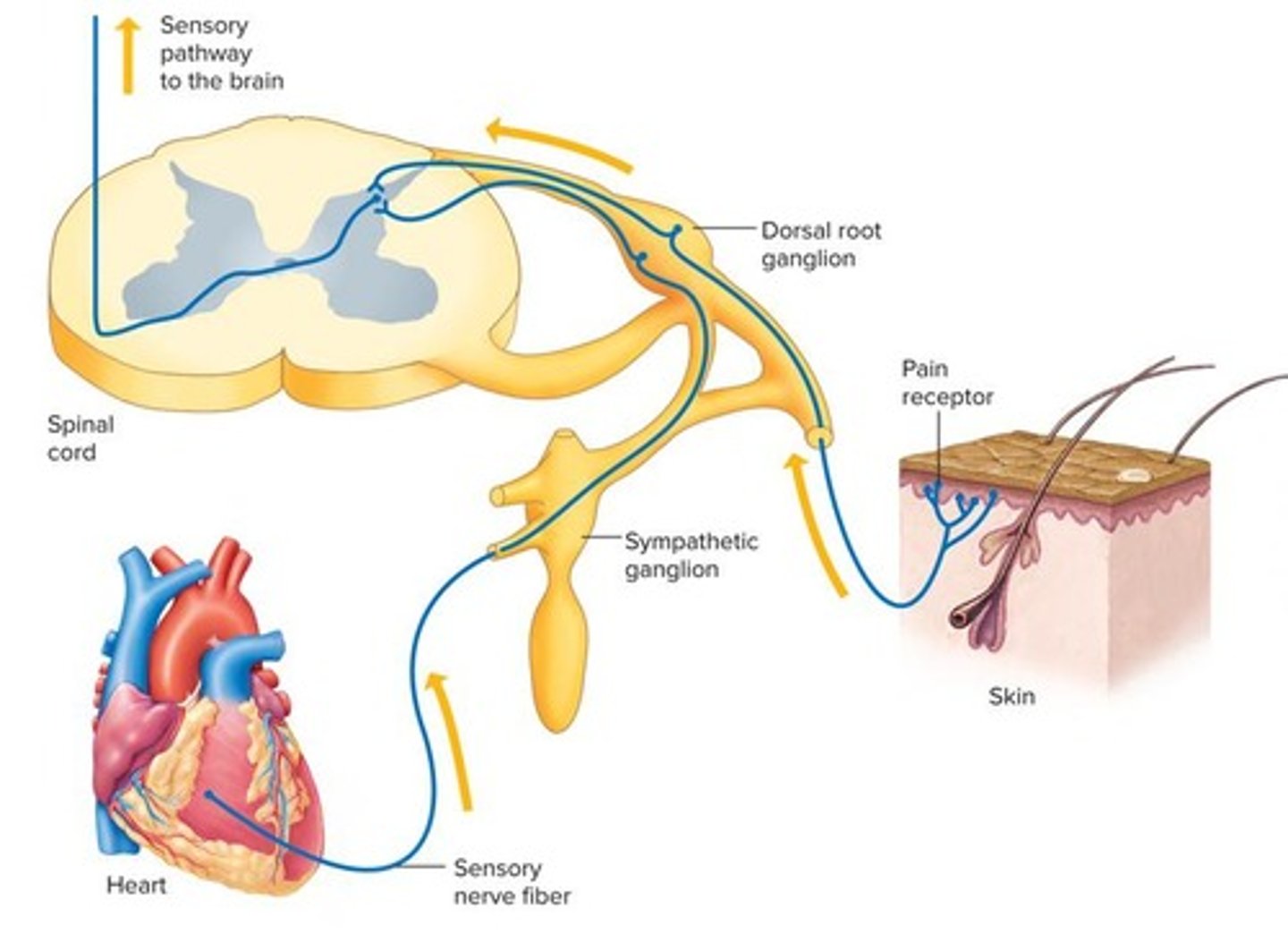
What types of fibers are involved in pain transmission?
1. A delta fibers (medium speed) 2. C fibers (slow)
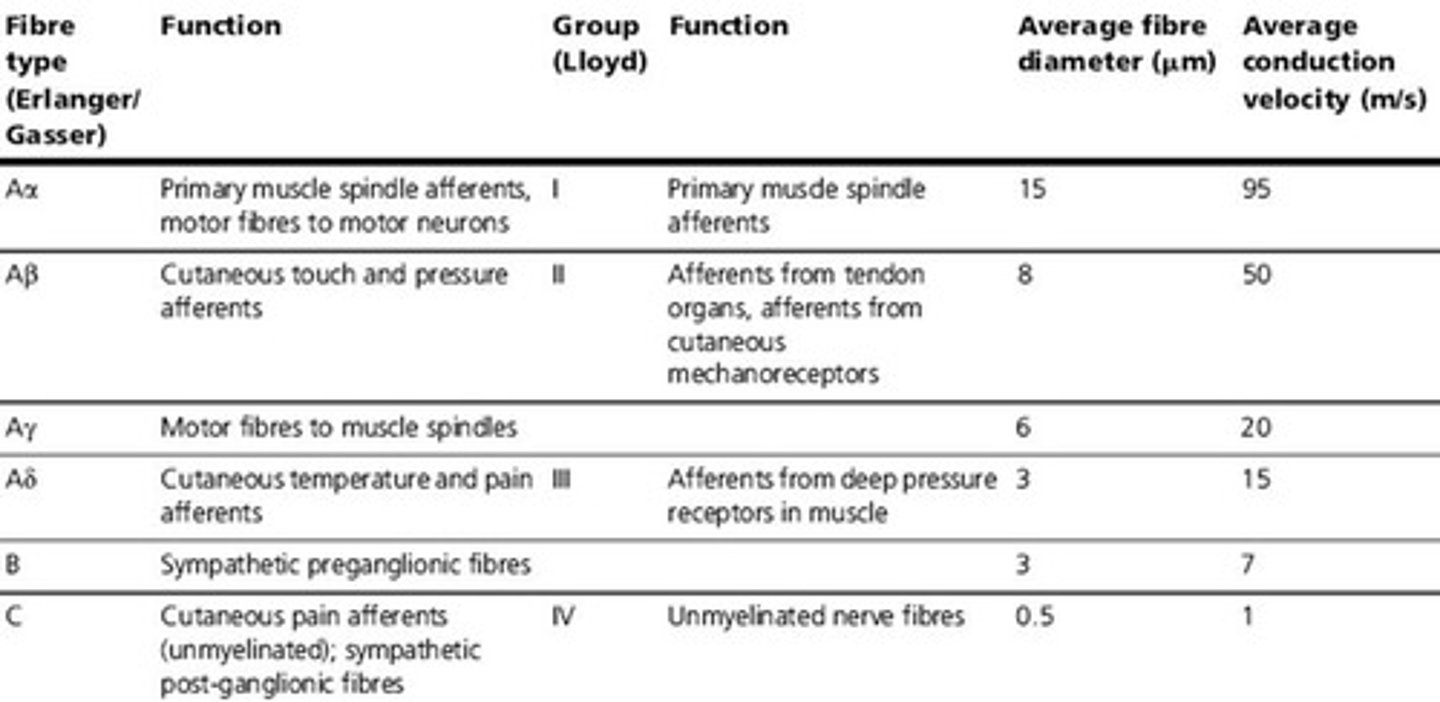
What neurotransmitters are associated with pain pathways?
1. Substance P 2. Glutamate
What is the function of substance P?
Substance P activates ascending pathways that transmit nociceptive signals to higher levels for processing.
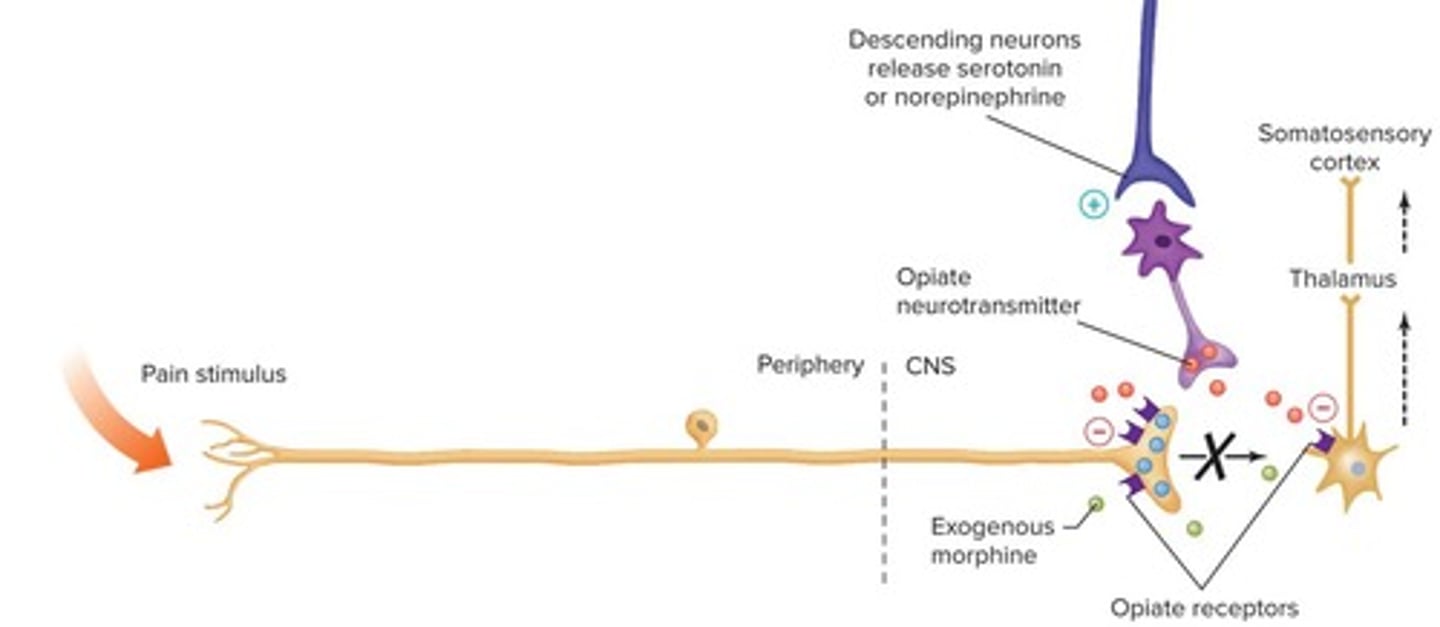
What is the role of the brain's analgesic system?
The analgesic system suppresses pain transmission in pathways entering the spinal cord.
What are endogenous opiates?
Endogenous opiates are natural pain-relieving substances in the body, such as endorphins and enkephalins.
What is referred pain?
Referred pain is the sensation of pain felt at a site other than the injured or damaged area.
How do prostaglandins affect nociceptors?
Prostaglandins sensitize nociceptors, increasing their response to stimuli.
What is the significance of the sensory unit in sensory pathways?
The sensory unit refers to the collection of sensory receptors and pathways that work together to process sensory information.
What is the relationship between convergence and sensory acuity?
Less convergence leads to smaller sensory units, resulting in greater sensory acuity.
What are the four essentials for obtaining sensory acuity?
1. Less convergence 2. Small receptive fields 3. Overlapping receptor distribution 4. Lateral inhibition
What is the primary function of pain?
Pain serves as a protective mechanism that brings awareness to tissue damage.
What is the impact of past painful experiences?
The storage of painful experiences helps individuals avoid similar damaging events in the future.
Still learning (46)
You've started learning these terms. Keep it up!